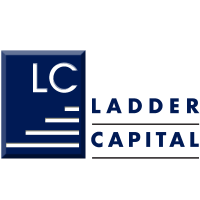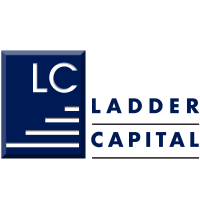
Ladder Capital Corp
NYSE:LADR


| US |

|
Johnson & Johnson
NYSE:JNJ
|
Pharmaceuticals
|
| US |

|
Berkshire Hathaway Inc
NYSE:BRK.A
|
Financial Services
|
| US |

|
Bank of America Corp
NYSE:BAC
|
Banking
|
| US |

|
Mastercard Inc
NYSE:MA
|
Technology
|
| US |

|
UnitedHealth Group Inc
NYSE:UNH
|
Health Care
|
| US |

|
Exxon Mobil Corp
NYSE:XOM
|
Energy
|
| US |

|
Pfizer Inc
NYSE:PFE
|
Pharmaceuticals
|
| US |

|
Palantir Technologies Inc
NYSE:PLTR
|
Technology
|
| US |

|
Nike Inc
NYSE:NKE
|
Textiles, Apparel & Luxury Goods
|
| US |

|
Visa Inc
NYSE:V
|
Technology
|
| CN |

|
Alibaba Group Holding Ltd
NYSE:BABA
|
Retail
|
| US |

|
3M Co
NYSE:MMM
|
Industrial Conglomerates
|
| US |

|
JPMorgan Chase & Co
NYSE:JPM
|
Banking
|
| US |

|
Coca-Cola Co
NYSE:KO
|
Beverages
|
| US |

|
Walmart Inc
NYSE:WMT
|
Retail
|
| US |

|
Verizon Communications Inc
NYSE:VZ
|
Telecommunication
|
Utilize notes to systematically review your investment decisions. By reflecting on past outcomes, you can discern effective strategies and identify those that underperformed. This continuous feedback loop enables you to adapt and refine your approach, optimizing for future success.
Each note serves as a learning point, offering insights into your decision-making processes. Over time, you'll accumulate a personalized database of knowledge, enhancing your ability to make informed decisions quickly and effectively.
With a comprehensive record of your investment history at your fingertips, you can compare current opportunities against past experiences. This not only bolsters your confidence but also ensures that each decision is grounded in a well-documented rationale.
Do you really want to delete this note?
This action cannot be undone.

| 52 Week Range |
10.18
12.36
|
| Price Target |
|
We'll email you a reminder when the closing price reaches USD.
Choose the stock you wish to monitor with a price alert.

|
Johnson & Johnson
NYSE:JNJ
|
US |

|
Berkshire Hathaway Inc
NYSE:BRK.A
|
US |

|
Bank of America Corp
NYSE:BAC
|
US |

|
Mastercard Inc
NYSE:MA
|
US |

|
UnitedHealth Group Inc
NYSE:UNH
|
US |

|
Exxon Mobil Corp
NYSE:XOM
|
US |

|
Pfizer Inc
NYSE:PFE
|
US |

|
Palantir Technologies Inc
NYSE:PLTR
|
US |

|
Nike Inc
NYSE:NKE
|
US |

|
Visa Inc
NYSE:V
|
US |

|
Alibaba Group Holding Ltd
NYSE:BABA
|
CN |

|
3M Co
NYSE:MMM
|
US |

|
JPMorgan Chase & Co
NYSE:JPM
|
US |

|
Coca-Cola Co
NYSE:KO
|
US |

|
Walmart Inc
NYSE:WMT
|
US |

|
Verizon Communications Inc
NYSE:VZ
|
US |
This alert will be permanently deleted.
 Ladder Capital Corp
Ladder Capital Corp
Ladder Capital Corp
Investor Relations
Ladder Capital Corp, a real estate investment trust (REIT), stands as a prominent player in the commercial real estate finance sector, primarily in the U.S. Founded in 2008, amidst the throes of a financial downturn, the company seized opportunities where others saw challenges. Its inception was driven by seasoned professionals who recognized a gap in the real estate investment landscape for a well-capitalized entity that could provide reliable funding. Ladder Capital engages in a multifaceted business model with three primary segments: loan origination, investment in real estate equity, and investment in securitized products. This approach allows it to dynamically allocate resources to wherever market opportunities appear most lucrative, thereby maximizing returns.
The company generates revenue mainly through interest and fee income from its extensive loan portfolio, which includes diverse products such as balance sheet first mortgage loans, secured loans, and mezzanine loans. In addition, Ladder Capital adeptly manages its real estate holdings and investments in commercial mortgage-backed securities (CMBS) to reap recurring income and capital appreciation. By focusing on high-quality assets and maintaining a strategic balance across its investment platform, Ladder Capital effectively hedges against market volatility, ensuring stability and steady income streams. This resilience and diversified strategy are what underpin Ladder Capital's commercial success, reinforcing its reputation as a pivotal entity in the U.S. real estate finance arena.

Ladder Capital Corp, a real estate investment trust (REIT), stands as a prominent player in the commercial real estate finance sector, primarily in the U.S. Founded in 2008, amidst the throes of a financial downturn, the company seized opportunities where others saw challenges. Its inception was driven by seasoned professionals who recognized a gap in the real estate investment landscape for a well-capitalized entity that could provide reliable funding. Ladder Capital engages in a multifaceted business model with three primary segments: loan origination, investment in real estate equity, and investment in securitized products. This approach allows it to dynamically allocate resources to wherever market opportunities appear most lucrative, thereby maximizing returns.
The company generates revenue mainly through interest and fee income from its extensive loan portfolio, which includes diverse products such as balance sheet first mortgage loans, secured loans, and mezzanine loans. In addition, Ladder Capital adeptly manages its real estate holdings and investments in commercial mortgage-backed securities (CMBS) to reap recurring income and capital appreciation. By focusing on high-quality assets and maintaining a strategic balance across its investment platform, Ladder Capital effectively hedges against market volatility, ensuring stability and steady income streams. This resilience and diversified strategy are what underpin Ladder Capital's commercial success, reinforcing its reputation as a pivotal entity in the U.S. real estate finance arena.





























 You don't have any saved screeners yet
You don't have any saved screeners yet
